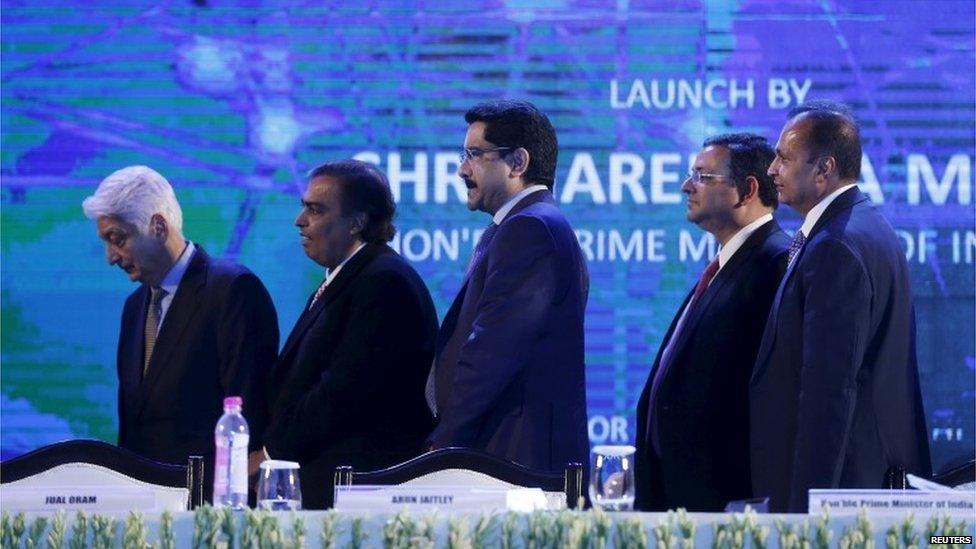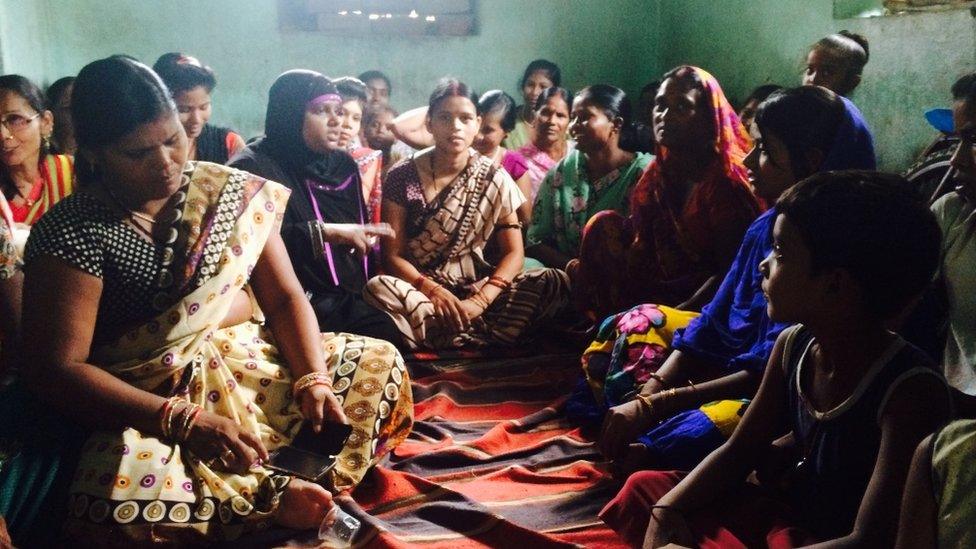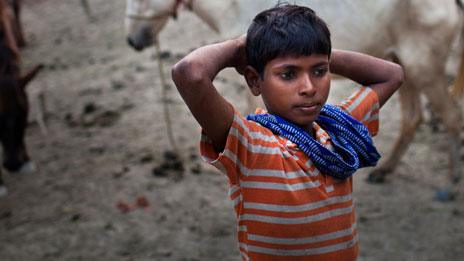UK ending aid to India: Where does the money go?
- Published

British aid has strongly helped empower women and give them a sense of what their rights are
For many years India was the biggest recipient of British overseas aid. Not any more. Britain will be ending bilateral aid to India by the end of this year.
The official line is that India's "rapid growth and development progress in the last decade" has made British aid unnecessary, although some "technical assistance" will continue.
The focus now, says the Department for International Development (Dfid) a trifle glibly, is trade, not aid.
I visited a village in Bihar to find out more.
More billionaires than Britain
The decision to end aid is a triumph for a group of largely Conservative MPs who have been arguing for some time that giving money to India can't be justified when spending at home is being cut so dramatically.
The argument against giving aid to India certainly isn't hard to make.
Why should British taxpayers be paying for poverty relief in a country which has just sent a mission to Mars, which boasts more billionaires than Britain and itself hands out hundreds of millions of pounds a year to needy nations?

India boasts more billionaires than Britain
And it isn't just the British that are uneasy about spending money on welfare efforts in India. Some Indian politicians are decidedly uncomfortable about it too.
"I think it's important that a country which is going to sit at the high table at the UN, a country that's part of the G20, a country that is contributing to the Brics bank… I think it's a bit troublesome to be dubbed as aid receivers," says India's former foreign minister Salman Khursheed
So what is the argument for giving aid?
'Terrible poverty'
Bidisha Pillai, a spokesperson for Save the Children in India, says the answer is simple: there is still terrible poverty here.
The Indian economy may be motoring ahead, growing at some 7% a year, and India may now be officially a middle income nation but the country is still home to a third of the world's poorest people. About 300 million Indians live on less than $1.25 a day.
It still has shockingly high levels of malnutrition - 40% of the world's malnourished children are in India.
And there are still woefully high levels of infant mortality - 1.3 million children die in India each year from easily preventable illnesses like diarrhoea, pneumonia and malaria.
But these figures raise another question. How can British aid make a difference with £200m ($303m) when India itself spends £70bn on welfare?
India's president once undiplomatically dismissed Britain's aid efforts as "a peanut".

UK aid is used to make government welfare programmes more efficient, say Indian activists
Ms Pillai has an answer for that too. She says you need to understand how the role of foreign aid has changed.
Forget food hand outs, she tells me, these days aid is much more likely to be spent attempting to wring the maximum benefit from the money India is already spending.
So, for example, British aid funds projects with some of the most marginalised people in the entire country.
I visited a community of Muslims and untouchables - Dalits, as they are called now - in Bihar, the poorest state in all India.
Where does the money go?
We were ushered into a dim house off the tangle of streets that make up the small town of Biharsharif. Thirty women, many with babies and infants in tow, had gathered to meet us.
In one corner was a huge pile of dried cowpats - a store of fuel for cooking and to warm houses in the cold winter months.
The women are part of a community organisation - set up by a local NGO called the Poorest Areas Civil Society programme (PACS) - which receives funding from the British government.
The idea, says Arti Verma who runs the project, is to make sure these women - and millions like them across the country - access the money and services that are available to them from the Indian government.
"Basically we work with the communities from the marginalised background and we make them aware of their rights and entitlements related to health, education, livelihood," she explained.
A key objective is to make sure they deliver their babies in hospital, giving both mother and baby a much better chance of survival. Until recently few did, anxious that because of caste or religion they might be discriminated against in hospital.
One of the women, Farazana Khatoon, tells me that she had two babies at home before becoming part of the project.
With her third child, she tells us proudly, she just went right in and demanded her rights.

About 300 million Indians live below the poverty line
And, says Ms Verma, that kind of change in attitude has made a huge difference to the health of these women and their children.
"Earlier there was a high rate of maternal deaths and infant deaths," she says.
The Department for International Development (Dfid) says the project has worked with 60,000 women's self help groups like this one just in Bihar and UK funded projects have reached a total of nine million women in India.
In the jargon of aid giving this is known as "demand generation", but British aid is also spent improving the quality of the service the Indian government provides - enhancing supply.
"What British aid does is work with the government to make sure that the money that the government of India is spending on development is well spent and is much more effective, so the quality of the programmes are better," says Ms Pillai.
Maybe the effect of ending British aid won't be noticed immediately, she argues, but she is certain it will make a difference in the long term, the next five years or so.
Britain - and India - may find the idea of bilateral aid anachronistic and faintly embarrassing but with so much poverty here in India, Save the Children and many other NGOs say they don't have any plans to stop working here.
- Published9 November 2012
